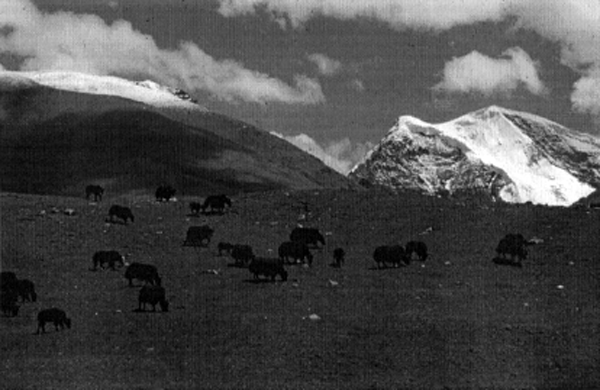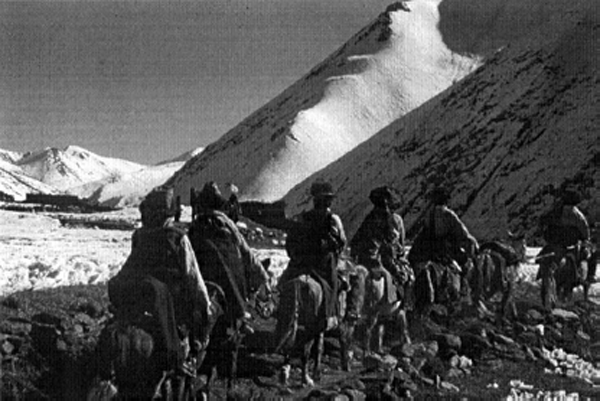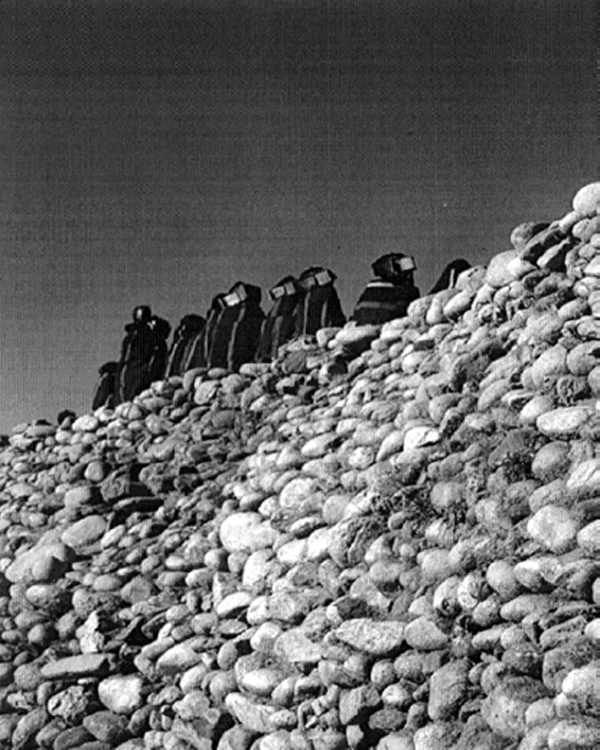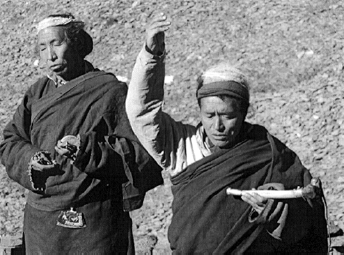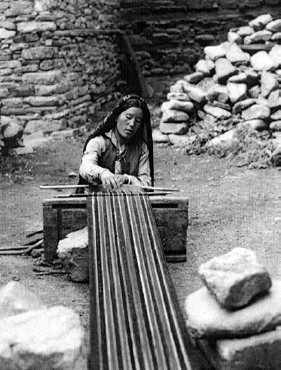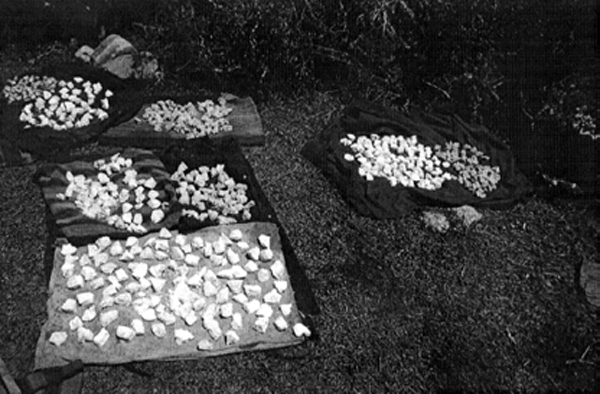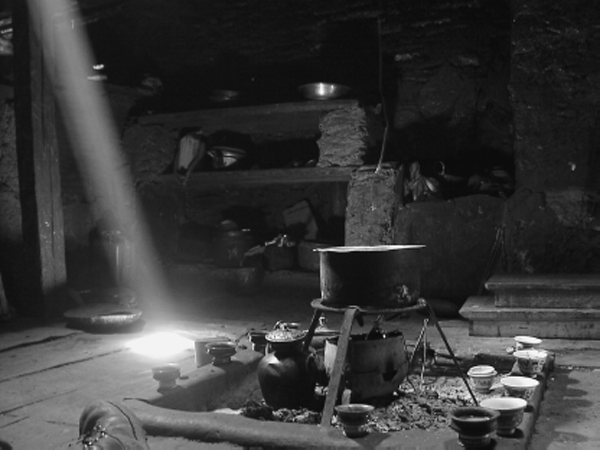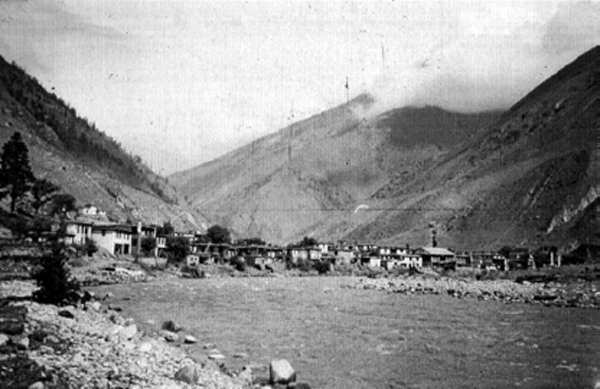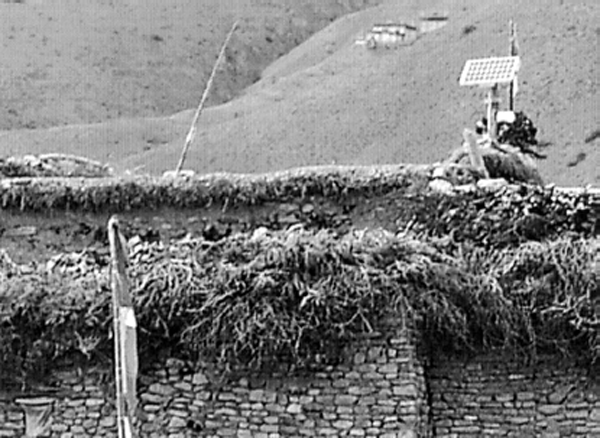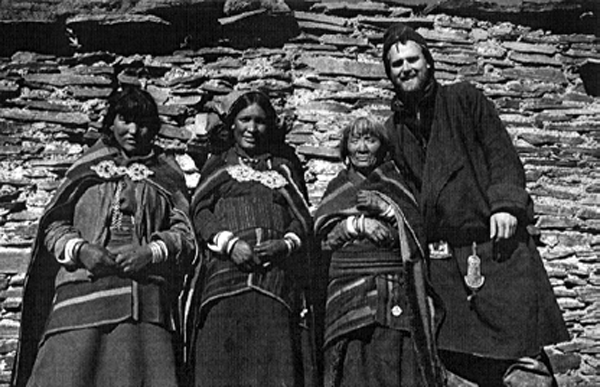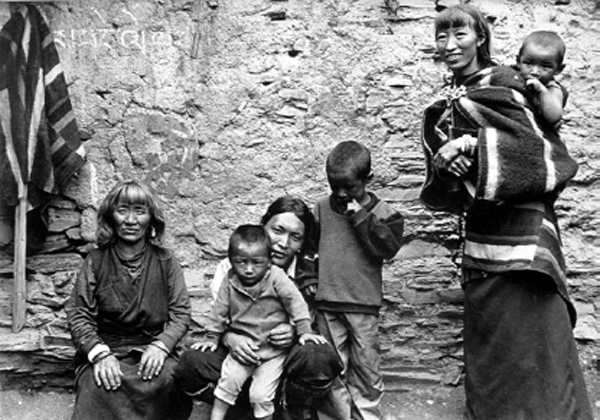Plate 1 Chorten in Panzang Valley (August 2002)
Plate 2 Yang Tser Gompa, Dolpo’s oldest monastery (Nangkhong Valley, July 1996)
Plate 3 Walking on the frozen Panzang River (Panzang Valley, January 1997)
Plate 4 Dolpo horse with hsrung charm tied around its neck (Panzang Valley, July 1997)
Plate 5 Goats and sheep tied head-to-head for milking (Tinkyu village, Panzang Valley)
Plate 6 Yak plowing fields in central Tibet (Tingri, Tibet Autonomous Region, May 1997)
Plate 7 Yak grazing in high summer pastures (Panzang Valley, July 1997)
Plate 8 Woman chasing a horse away from her fields (Tarap Valley, June 1996). She now has the right to claim compensation for her lost crops through the mediation of the village headman, who may set a fine for the horse’s owner to pay in the form of cash or grain.
Plate 9 Caravan group from Nangkhong Valley, transporting Nepali grains, which they will trade for salt in Tibet (June 1997)
Plate 10 Amchi Lama Sonam Drukge grinding medicinal herbs (Polde village, Panzang Valley, January 1997)
Plate 11 Lama Sonam Drukge performing a necropsy on a goat, which died by eating poisonous fodder according to the amchi’s investigation (Polde village, Panzang Valley, January 1997)
Plate 12 Wedding party sent by the groom’s household to the bride’s village. The second horse in this line is riderless, awaiting the bride, who is leaving her maternal home. (Polde village, Panzang Valley, January 1997)
Plate 13 Women dancing in a circle at a wedding in Shimen village (Panzang Valley, January 1997)
Plate 14 Lama Karma Tenzin (left) and Lama Sonam Drukge conducting exorcism ritual (Panzang Valley, December 1996)
Plate 15 Dolpo woman weaving with backstrap loom (Pungmo village, July 1996)
Plate 16 Cheese (chur-wa) drying on blankets in the sun (Panzang Valley, July 1997)
Plate 17 Typical Dolpo hearth, which burns mostly dried dung and shrubs (Tralung Monastery, Panzang Valley, August 2002)
Plate 18 To build a new house, Dolpo men carry logs from forests four days away. (Tarap Valley, November 1996)
Plate 19 Dunai, Dolpa District Headquarters, the site of a September 2000 Maoist attack (Bheri River Valley, June 1996)
Plate 20 Carved wooden sculpture representing the place deity that guards the entrance to Thapagaon village in the Kag-Rimi area of southwest Dolpa District. Not only do the pastoralists of Nangkhong Valley who migrate to Kag-Rimi for winter pastures encounter new regimes of resource access and use rights, but they must also negotiate the symbols, ritual practices, and beliefs of the Hindu villagers who are their hosts. (February 1997)
Plate 21 Solar panel atop house in Tarap Valley (August 2001)
Plate 22 Yartsa gumbu—“summer grass, winter insect”—the highly desired and valuable anodyne harvested in Dolpo for trade in Tibet. One kilogram can fetch up to $2,000 in China’s markets. (Tarap Valley, June 1997)
Plate 23 Author with his host family (Tralung Monastery, Panzang Valley, January 1997)
Plate 24 Polde village resident (July 1997)
Plate 25 The household of Tralung monastery, Tinkyu village (July 1997)
Plate 26 Lama Karma Tenzin, sitting next to his son’s painting, Tralung monastery (July 2002)







